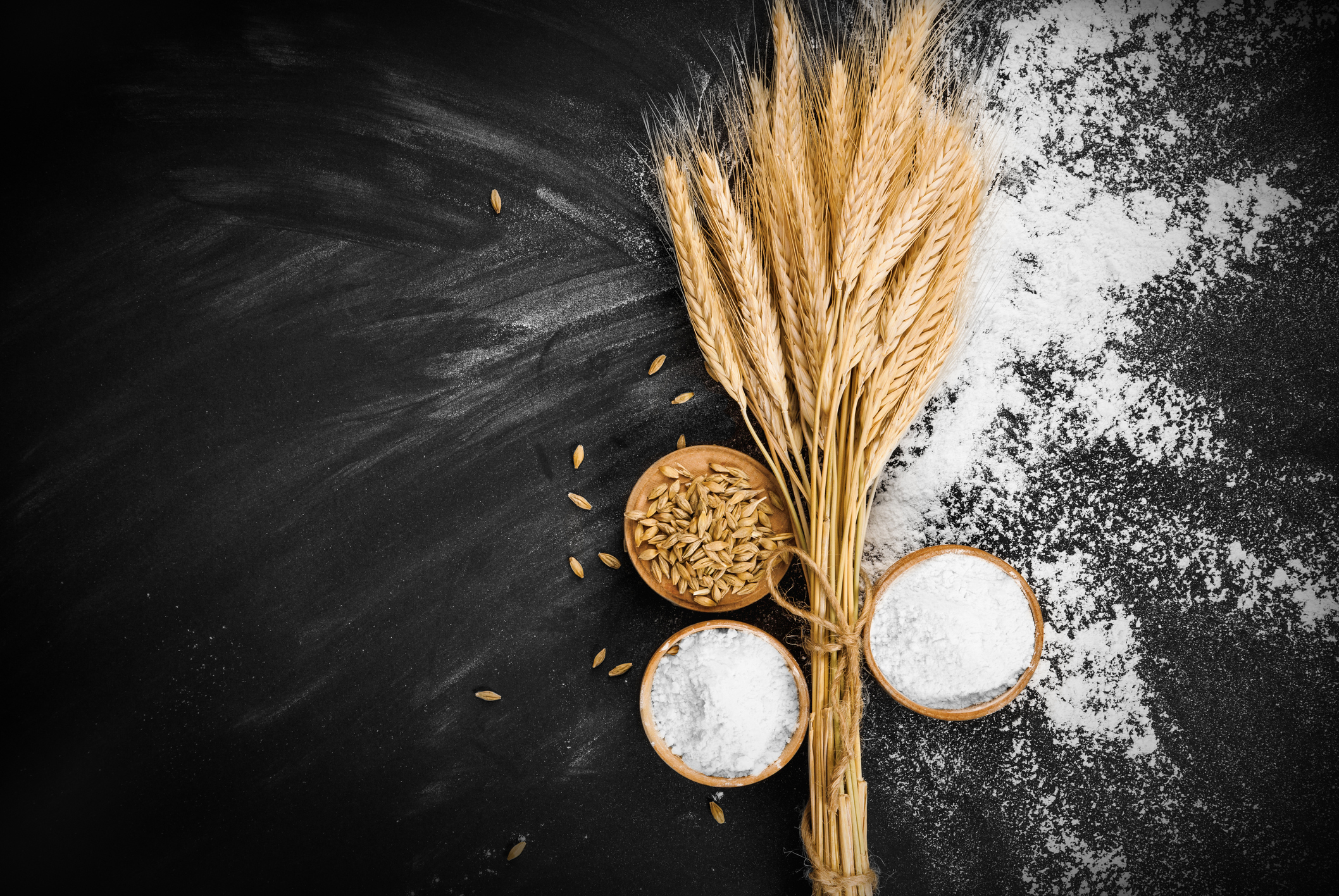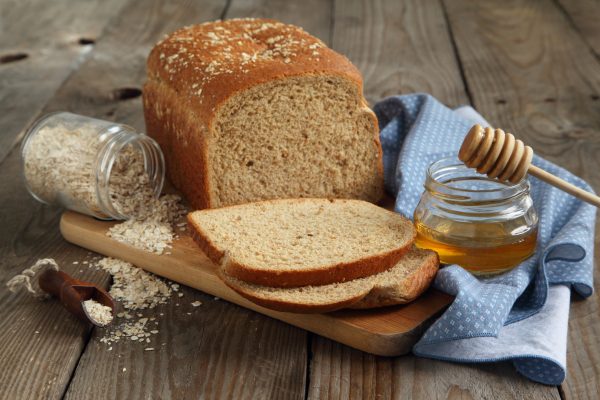DISCOUNT: UP TO 90% OFF






Is Wheat Bread Good for Diabetics? - Unraveling the Truth


Table of Contents
- How Does Food Affect Blood Sugar Levels?
- Breaking Down Bread: What Diabetics Need to Know
- What Bread Is Ok for Diabetics?
- Refined vs. Whole Grain Bread
- Is Wheat Bread Bad for Diabetics?
- Is Whole Wheat Good for Diabetics?
- Is Honey Wheat Bread Good for Diabetics?
- Is Shredded Wheat Good for Diabetics?
- What Is the Best Whole Wheat Bread for Diabetics?
- Benefits of Whole Grains in Diabetes Management
- How to Incorporate Wheat Bread in a Diabetic Diet
- Portion Control:
- Pairing With Proteins:
- Adding Fiber:
- Switching Up Meals:
- Spreading Healthy Fats:
- Look for No Added Sugars:
- Conclusion: Making Informed Decisions for a Healthier Life
- About The Author
Is wheat bread good for diabetics? A simple question that has spurred countless debates among health enthusiasts, medical practitioners and patients alike. After all, diabetes affects more than 422 million people worldwide according to the World Health Organization, a figure expected to double in the next 20 years. For those diagnosed, diet becomes a frontline defense against fluctuating blood sugar levels.
In the spotlight of our culinary lineup is bread, a dietary staple for millions, its value in a diabetic diet often questioned. Now, let's not loaf around. The bread we talk about is not a monolith; it ranges from white, whole wheat, to multigrain and each variety impacts blood sugar differently.
Whole wheat bread, touted for its health benefits, stands in stark contrast to its highly processed cousin, white bread. But how does it fare in a diabetic diet? This question gains importance as we understand that diabetes is not a mere health condition, but a lifestyle that influences your every food choice.
Making the right choices can mean the difference between a stable blood glucose level and a hazardous roller-coaster ride. With the role of diet being pivotal in managing diabetes, we aim to dissect the story behind wheat bread and its impact on blood sugar levels. Read on as we explore whether wheat bread is a friend or foe for diabetics. In our search for answers, we’ll discuss the merits and demerits of various types of bread, all while serving you some helpful tips for maintaining a balanced diet for diabetes.
How Does Food Affect Blood Sugar Levels?
Understanding how the food you eat impacts your blood glucose levels is crucial when managing diabetes. Your blood sugar levels are not just an arbitrary number. They're a lifeline, determining how you feel now and your health in the future. Food is a primary influencer of blood glucose levels. After you consume food, your body breaks it down into various nutrients that are absorbed into your bloodstream. One of these nutrients is carbohydrates, often simplified to "carbs." Carbs play a pivotal role in dictating your blood sugar levels.
Now, why are carbohydrates such a big deal when it comes to blood sugar levels? The reason lies in the body's digestion process. Carbohydrates in your food are converted into glucose (a form of sugar) which then enters your bloodstream.
This glucose is your body's main source of energy. However, in individuals with diabetes, this energy-producing process is often disrupted. The pancreas either doesn't produce enough insulin, a hormone that helps glucose get into your cells, or the body doesn't respond to insulin as it should. This condition results in high levels of glucose in the blood, a state known as hyperglycemia. But not all carbohydrates affect your blood sugar levels the same way.
Simple carbohydrates, also known as simple sugars, are easily and quickly digested by the body. They rapidly increase your blood sugar levels, leading to a "sugar rush," followed by a "crash." This fluctuation can be dangerous for diabetics. Foods like soft drinks, candy and white bread are high in simple carbohydrates.
On the other hand, complex carbohydrates, often found in whole grains and vegetables, are absorbed more slowly into the bloodstream, providing a steady release of energy. They do not cause the dramatic spikes and dips in blood glucose levels that simple carbs do.
This slower absorption rate is due to the fiber content in these foods which also aids in keeping you feeling full for longer. Understanding the Glycemic Index (GI) of foods can be a helpful tool for diabetics to manage their carbohydrate intake.
The Glycemic Index is a measure of how quickly a food causes your blood sugar to rise. Foods with a high GI cause a rapid rise in blood glucose levels, while foods with a low GI cause a slower, steady increase. For instance, whole wheat bread has a lower GI than white bread, meaning it will not raise blood sugar levels as quickly.
Therefore, diabetics are often advised to choose foods with a lower GI to maintain better blood sugar control. However, carbohydrates aren't the only dietary factor to consider. Protein and fats also play a role, although less direct.
High-fat meals can slow digestion and delay the absorption of carbohydrates, leading to a slower rise in blood sugar but prolonging the time glucose levels stay elevated. In addition, a balanced diet is about more than just macronutrients. Vitamins, minerals and antioxidants contribute to overall health, helping your body function optimally and potentially improving insulin sensitivity.
Breaking Down Bread: What Diabetics Need to Know
Navigating through the bread aisle can be a daunting task, especially for individuals living with diabetes. It is vital to understand the differences among the bread varieties and how they affect blood glucose levels, as diet plays a critical role in managing diabetes. Bread mainly comes in two varieties - refined and whole grain. Each variety has a distinct nutrient profile which consequently influences the body's glucose response.
What Bread Is Ok for Diabetics?
The range of bread available can be somewhat overwhelming, especially if you are someone who needs to manage their blood sugar levels due to diabetes. White bread, multi-grain bread, whole wheat bread, sourdough, rye - the list goes on.
But which is the right one for a diabetic? and should they eat them? Bread can be an excellent source of complex carbohydrates which can be slowly broken down by the body into glucose, providing a steady source of energy. However, not all bread is created equal. For diabetics, choosing the right bread can have a significant impact on blood sugar levels.
The best bread for individuals with diabetes is whole grain bread. Whole grain bread, as the name suggests, uses the entire grain in its production, including the germ, bran and endosperm.
This is important as the germ and bran contain a high proportion of the grain's nutritional content, including vitamins, minerals and fiber. Fiber, in particular, is crucial for individuals with diabetes. It slows the breakdown of carbohydrates into glucose, resulting in a more gradual rise in blood sugar levels after eating.
In addition the high fiber content can make you feel fuller for longer, potentially helping with weight management - another crucial aspect of managing diabetes. This means that whole grain bread, including whole wheat bread, is generally a healthier choice for those with diabetes. Whole wheat bread, made from whole grains of wheat, is naturally high in fiber and provides a slower, more stable rise in blood glucose than many other types of bread.
Refined vs. Whole Grain Bread
The key difference between these bread types lies in the grain they're made from. Refined bread is typically made from white flour, a product of refined grains. During the refining process, grains undergo milling which removes the bran and germ.
This procedure significantly reduces the fiber, protein, vitamin and mineral content. Refined grains are left with mostly endosperm the part of the grain that's rich in carbohydrates. As a result, refined bread often has a higher glycemic index, causing rapid spikes in blood sugar levels when consumed. This effect makes white bread and other refined grain products less suitable for people with diabetes.
Is Wheat Bread Bad for Diabetics?
The term 'wheat bread' can be somewhat misleading, as it does not automatically mean it's made from whole grains. Unless it specifies '100% whole grain' or 'whole wheat,' it is likely to be made from refined grains.
Therefore, it's essential to note that wheat bread made from refined grains can be as detrimental to blood glucose levels as white bread. The key is to select bread made from whole grains, as they are high in fiber and have a lower glycemic index. This characteristic helps moderate the release of glucose into the bloodstream, preventing sudden spikes.
Is Whole Wheat Good for Diabetics?
Whole grain products, such as 100% whole wheat bread, can provide significant benefits for people living with diabetes. They contain all parts of the grain — the bran, germ and endosperm. Foods made from these grains are rich in fiber and keep you feeling full which can help control your weight. Whole grains can also help regulate your blood sugar.
Unlike refined grains, whole grains have a low glycemic index, meaning they're digested more slowly and cause a slower increase in blood glucose levels. Additionally they are packed with vital nutrients, including B vitamins and minerals like iron, magnesium and selenium. Including whole wheat bread in a diabetic diet can therefore, contribute to better glycemic control and overall health. However, portion control is critical, as all bread — even whole grain ones — contain carbohydrates that can add up and affect blood sugar levels.
Is Honey Wheat Bread Good for Diabetics?
One type of bread that is often thought of as a healthier option is honey wheat bread. However the name can be misleading. Despite what the name might suggest, honey wheat bread is not necessarily a whole grain product and therefore may not provide the same benefits as whole grain bread. Often honey wheat bread is simply white bread with a small amount of whole grains and honey added.
This means it can contain refined grains which have had the nutritious germ and bran removed during the refining process. Refined grains are broken down by the body more quickly than whole grains which can lead to a more rapid rise in blood sugar levels - not ideal for those with diabetes. Further the honey in honey wheat bread contributes to its sugar content.
While honey is a natural sugar, it can still have a significant impact on blood sugar levels. So, while honey wheat bread may be a more flavorful option, it's not necessarily the best choice for those with diabetes. It's crucial to read the label carefully and choose breads that are high in fiber and made from whole grains.

Oatmeal and honey bread
Is Shredded Wheat Good for Diabetics?
Shredded wheat is a type of whole grain breakfast cereal that can indeed be a good option for those managing diabetes. As it is made from whole grains, shredded wheat is rich in fiber which can provide several key benefits for individuals with diabetes.
High-fiber foods like shredded wheat can slow the absorption of sugar into your bloodstream and prevent spikes in glucose and insulin. This is crucial in managing diabetes because high blood sugar levels can lead to a host of health issues, including heart disease, stroke and kidney disease. However, it's important to note that not all shredded wheat products are created equal.
Some versions of shredded wheat are frosted or flavored with additional sugars which can negate the benefits of the whole grains. For the most healthful option, individuals with diabetes should choose plain, unsweetened shredded wheat.
Adding fresh fruits or a sprinkle of cinnamon can make this more palatable without significantly increasing your sugar intake. Remember to always check the nutritional information on the packaging to make sure you're getting a product that is low in added sugars and high in fiber.
What Is the Best Whole Wheat Bread for Diabetics?
Whole wheat bread is an excellent choice for diabetics due to its nutritional composition. But not all whole wheat breads are the same. The best whole wheat bread for diabetics is high in fiber and low in added sugars. Fiber, particularly soluble fiber, can slow the absorption of sugar into your bloodstream and prevent sudden spikes in blood glucose.
This is extremely beneficial for diabetics, as high blood sugar levels can lead to a host of health complications. When shopping for whole wheat bread, you should check the nutritional information on the packaging. Look for breads that are high in fiber - ideally, each slice should have at least 3 grams of fiber.
Avoid breads that list 'enriched flour' in their ingredients, as this is just a fancy name for white flour. The first ingredient should be '100% whole wheat flour'. In addition, watch out for terms like 'multigrain', 'wheat', or 'seven-grain'. These do not necessarily mean the bread is made from whole grains. Only a label stating '100% whole grain' guarantees that all grains used are whole grains.
Also, avoid breads with added sugars. These can cause your blood glucose levels to spike and make it harder for you to control your diabetes. Sugars can come hidden under different names, such as corn syrup, high fructose corn syrup, molasses, fruit juice concentrate and many more. Lastly, remember that portion control is key. Even the healthiest bread can cause issues if eaten in excess. Try to stick to one serving size which is typically one slice for most breads.
Benefits of Whole Grains in Diabetes Management
Whole grains play a crucial role in a healthy diet, particularly for those managing diabetes. Unlike refined grains, whole grains contain all parts of the grain — the bran, germ and endosperm. The benefits of consuming whole grains, such as brown rice, oatmeal and whole wheat bread, are many, especially in the context of diabetes management. Firstly, whole grains are rich in fiber.
Fiber is the part of plant-based foods that your body can't digest or absorb. This might sound like a disadvantage, but in reality, it's beneficial. When you consume foods rich in fiber they move through your digestive system more slowly.
This slowing down effect prevents a sudden rise in blood glucose levels thereby helping individuals manage their diabetes more effectively. Another advantage of whole grains is their richness in essential vitamins and minerals, such as B vitamins and iron.
B vitamins play a crucial role in the body's metabolism process, while iron is necessary for the creation of healthy red blood cells. The lack of these nutrients which is often seen in those who consume refined grains, can lead to complications such as anemia. Whole grains are also a rich source of antioxidants. Despite being more known for their presence in fruits and vegetables, antioxidants are abundant in whole grains. Antioxidants help protect your body from damage caused by potentially harmful molecules known as free radicals.
The antioxidant content in whole grains also contributes to the prevention of several chronic diseases like heart disease and cancer. Furthermore the consumption of whole grains is linked with weight management, an important aspect for individuals with diabetes. Whole grains have a lower glycemic index, meaning they cause a slower rise in blood glucose levels which can help control body weight. Overweight and obesity are risk factors for developing type 2 diabetes, so maintaining a healthy weight is an integral part of diabetes management.
Finally the consumption of whole grains promotes a healthier heart. Whole grains support heart health by reducing the risk of heart disease the leading cause of death among people with diabetes. The fiber in whole grains can help reduce the levels of low-density lipoprotein (LDL) cholesterol, also known as the 'bad' cholesterol, in your body.
How to Incorporate Wheat Bread in a Diabetic Diet
Whole wheat bread can definitely be incorporated into a diabetic diet. The trick lies in the right methods and portion sizes, balanced with other dietary components like proteins and healthy fats. Here's how you can make wheat bread a part of a balanced diet for diabetes management.
Portion Control:
Portion control is the cornerstone of diabetes management. When it comes to wheat bread the portion size can vary depending on the person's overall carbohydrate intake, activity level and medication plan. On average, a serving size is typically one slice. People with diabetes should aim to balance their consumption of bread with other carbohydrate-rich foods, like fruits, starchy vegetables and dairy products, to avoid blood sugar spikes.
Pairing With Proteins:
Another way to incorporate wheat bread into a diabetic diet is by pairing it with proteins. Proteins slow the digestion and absorption of carbohydrates, helping to prevent rapid blood sugar spikes. A sandwich with lean meats like chicken or turkey, or even a plant-based protein like hummus, can be a balanced meal.
Adding Fiber:
To further improve the nutritional profile of your meal, consider adding fiber-rich foods. High-fiber foods like avocados, berries, or chia seeds not only slow the release of glucose into the bloodstream but also increase the feeling of fullness, helping you to manage your portions.
Switching Up Meals:
Whole wheat bread isn't just for sandwiches. You can also use it in other meals. For instance, consider using whole wheat bread in your morning French toast, or as croutons in your salads. Also, it can serve as a base for your pizzas, where you can top it with lots of vegetables and lean proteins.
Spreading Healthy Fats:
Spreading healthy fats like avocado or natural nut butter on your bread can also help in maintaining blood glucose levels. The fats slow down digestion, preventing blood sugar spikes and keeping you satiated longer.
Look for No Added Sugars:
Ensure the whole wheat bread you choose doesn't contain added sugars. Always read the labels and look for bread that has zero added sugars to avoid unnecessary increases in your blood sugar levels. Remember, incorporating wheat bread into a diabetic diet requires mindful eating, understanding your body's responses and constant blood sugar monitoring.
It's always best to consult with your healthcare provider or a nutritionist for personalized advice based on your health status and lifestyle. A dietitian can help you plan your meals, taking into account your likes, dislikes and your daily routine, ensuring you have a variety of options to choose from which can help you stick to a healthy eating plan in the long run.
Conclusion: Making Informed Decisions for a Healthier Life
Diabetes management is not just about following restrictions; it's about making informed choices that support your health and well-being. And while supplements like SugarMD Advance Glucose Support can aid in blood sugar control they work best when combined with other lifestyle modifications. These can include regular exercise, stress management and, of course, a balanced diet. Wheat bread can be part of this balanced diet. While the idea that wheat bread is unsuitable for diabetics is widespread the reality is that not all wheat bread is created equal.
Choosing the right type of wheat bread - one that is high in fiber and made from whole grains - can contribute to maintaining steady blood sugar levels. So, whether it's picking the right bread or choosing a supplement like SugarMD Advance Glucose Support, remember that every choice you make can impact your journey with diabetes. And each informed decision you make brings you one step closer to a healthier life.
About The Author
Meet Dr. Ahmet Ergin a highly skilled and dedicated endocrinologist with a passion for diabetes care. Dr. Ergin earned his medical degree with honors from Marmara University in Istanbul. He completed internal medicine residency and endocrinology fellowship at Cleveland Clinic.
Dr. Ergin is board-certified in Internal Medicine, Endocrinology, Diabetes and Metabolism due to his vast medical expertise. He's a certified diabetes educator, author of "The Ultimate Diabetes Book," and founder of "the SugarMD YouTube channel."
Dr. Ergin offers exceptional diabetes care to his patients in Port Saint Lucie, FL, helping them manage effectively. Disclaimer: These statements have not been evaluated by the Food and Drug Administration. Information on this website isn’t intended to treat, cure or prevent any disease. Discuss with your doctor and do not self-treat.
Written By Dr. Ahmet Ergin
461 total articles
Meet Dr. Ahmet Ergin, a highly skilled and dedicated endocrinologist with a passion for diabetes care. Dr. Ergin earned his medical degree with honors from Marmara University in Istanbul. He completed internal medicine residency and endocrinology fellowship at Cleveland Clinic. Dr. Ergin is board-certified in Internal Medicine, Endocrinology, Diabetes, and Metabolism due to his vast medical expertise. He's a certified diabetes educator, author of “The Ultimate Diabetes Book,” and founder of “the SugarMD YouTube channel.” Dr. Ergin offers exceptional diabetes care to his patients in Port Saint Lucie, FL, helping them manage effectively. For a closer look into his insights and experiences, connect with Dr. Ahmet Ergin on LinkedIn, Instagram, and YouTube.”
Disclaimer: These statements have not been evaluated by the Food and Drug Administration. Information on this website isn't intended to treat, cure or prevent any disease. Discuss with your doctor and do not self-treat.
Products













